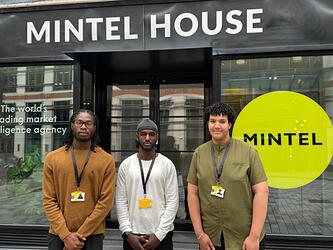19% of online surveys taken on a mobile device, says new report
Published over the weekend, the GreenBook Consumer Participation in Research (or CPR) report uses a pretty weighty sample to make such a claim: over 1.5m web users.
Research partner RIWI takes advantage of people’s tendency to occasionally misspell a URL when typing it in to a browser’s direct navigation bar. Instead of ending up on an error page, the user is instead presented with a series of short survey questions. At the same time, RIWI is able to collect meta-data about the devices people use when they access the survey, which is where the 19% figure comes from.
iOS was the most mobile platform in use at 33%, followed by Android at 25% and BlackBerry at 12% – although iOS is heavily overrepresented and Android underrepresented in the RIWI survey when compared to third-party data.
Meanwhile, over on desktop devices, 87% of people accessing the survey were on Windows machines, with Microsoft’s Internet Explorer the most widely used browser ( 39%), followed by Chrome ( 30%) and Firefox ( 21%).
The full report is available for download here.

We hope you enjoyed this article.
Research Live is published by MRS.
The Market Research Society (MRS) exists to promote and protect the research sector, showcasing how research delivers impact for businesses and government.
Members of MRS enjoy many benefits including tailoured policy guidance, discounts on training and conferences, and access to member-only content.
For example, there's an archive of winning case studies from over a decade of MRS Awards.
Find out more about the benefits of joining MRS here.











6 Comments
Anon
12 years ago
This is a gigantic claim. 1.5 million users? I doubt if it is even representative. Another example of rubbish been thrown out to the open.
Like Reply Report
Eric Meerkamper
12 years ago
Actually,1,587,281 respondents from 231 countries and regions of the world were randomly exposed to the survey, of which about 10% (160,118) gave responses. The report provides detailed statistical analysis of the limitations of both the un-weighted and weighted data as well as its representativeness for the Internet population (not general population). Please feel free to read the report and contribute your comments on the findings.
Like Reply Report
John Grono
12 years ago
I note the sample was web users. While they may have asked about other methodologies that web users have experienced, have they taken into account the people who don't have web access and therefore will have experienced F2F and CATI but not web. Verdict: Overstatement.
Like Reply Report
Eric Meerkamper
12 years ago
John, you are correct. The article above incorrectly interpreted the report findings to mean that 19% of ALL surveys globally are taken on mobile devices. As stated in the report, this study was only with people with web-enabled devices and found that 19% of these people responded using a mobile phone.
Like Reply Report
Brian Tarran
12 years ago
Hi Eric, Agree that we should have been more specific about it referring to online surveys, and have updated accordingly.
Like Reply Report
Ray Poynter
12 years ago
Hi Eric Does the 19% relate to the 10% who answered the survey, or the 100% who saw the invitation? Both are interesting, but the implications are different.
Like Reply Report